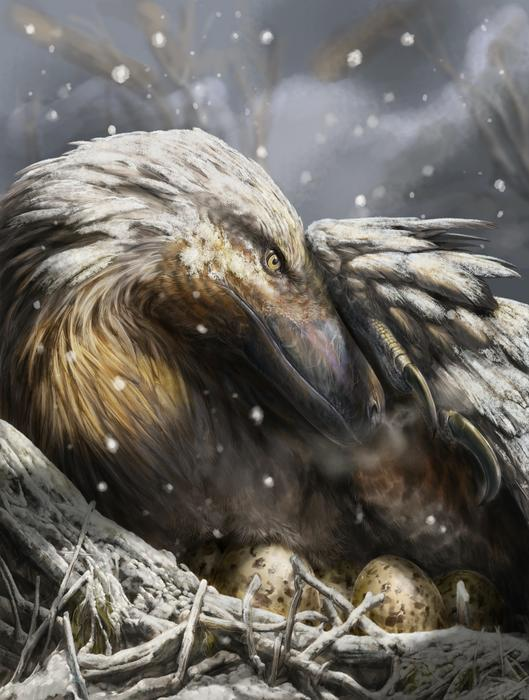The ability to regulate body temperature internally, rather than relying on the Sun, may have first appeared among dinosaurs around 180 million years ago, coinciding with an extreme climatic period.
Dinosaurs were originally thought to have been cold-blooded creatures. Their name means “terrible lizard” after all, and lizards need to bask on rocks to warm their blood. This idea was thrown into question by the discovery of species of dinosaurs that lived near the poles, apparently surviving winter conditions modern reptiles could not handle. For years, the warm-blooded versus cold-blooded dinosaur debate was among the hottest in palaeontology.
Now, there is broad agreement that some, but not all, dinosaurs were warm-blooded or endothermic, to use the more scientific term. After all, we now know birds are part of the Dinosauria clade and lizards are not. Since the ancestral dinosaurs were almost certainly cold-blooded, this raises the question of when the first warm-blooded dinosaurs emerged. Looking at when they first colonized colder regions could provide the answer.
The first bones from both theropods and ornithischians – two of the three main dinosaur branches – appear in cold regions in the Early Jurassic, Dr Alfio Alessandro Chiarenza of University College London reports. No equivalent presence from sauropods has been detected, making it more likely thermoregulation had not evolved on this branch, rather than us having got our temperature reconstructions wrong.
“Our analyses show that different climate preferences emerged among the main dinosaur groups around the time of the Jenkyns event 183 million years ago, when intense volcanic activity led to global warming and extinction of plant groups,” Chiarenza said in a statement.
A period of high temperatures might seem an unlikely catalyst for developing the capacity to survive cold conditions, but it seems this was the case.
“At this time, many new dinosaur groups emerged,” Chiarenza continued. “The adoption of endothermy, perhaps a result of this environmental crisis, may have enabled theropods and ornithischians to thrive in colder environments, allowing them to be highly active and sustain activity over longer periods, to develop and grow faster and produce more offspring.”
Although the most famous theropods are T. Rex and Velociraptors, co-author Dr Sara Barela of the Universidade de Vigo noted birds are theropods too, adding: “Our study suggests that birds’ unique temperature regulation may have had its origin in this Early Jurassic epoch.”

It is crucial that some dinosaurs laid eggs at high latitudes, proving they didn’t just migrate there in summer.
Image Credit: Davide Bonadonna/Universidade de Vigo/UCL
It was around this time that sauropods grew to the enormous sizes that are their most famous feature, which may have been another consequence of the environmental changes going on.
As further evidence for their claim sauropods didn’t learn to thermoregulate while some members of each of the other branches did, the authors note that sauropods were common in relatively arid grasslands. This refutes the idea they avoided the poles because they relied on the rich foods available in tropical rainforests. If it wasn’t the lack of water that prevented expansion towards the poles, the cold appears the obvious explanation. Then again, seeing the theropod predators heading for the poles wouldn’t have given sauropods much incentive to join them.
The sauropods did eventually make it closer to the poles during the Cretaceous, as seen in the example of Patagotitan, a candidate for the largest beast to ever walk the Earth. However, the world as a whole was warmer during the early Cretaceous than during the Jurassic, and the plant fossils found in similar locations to titanosaurs imply average annual temperatures of 10-15 °C (18-27 °F).
The authors propose that even though sauropods could survive at high latitudes in the Cretaceous, they didn’t do so well in the far north, perhaps because they were still less suited to it than ornithopods, who outcompeted them. The enormous size sauropods had reached by this point may have helped their largest members survive close to the south pole in the Cretaceous, as all that thermal mass would have kept their body temperature relatively stable overnight.
Although the work suggests birds’ warm-bloodedness is very ancient, mammals still probably had them beat by 50 million years.
The study is published in Current Biology.
Source Link: The First Warm-Blooded Dinosaurs Probably Evolved 180 Million Years Ago